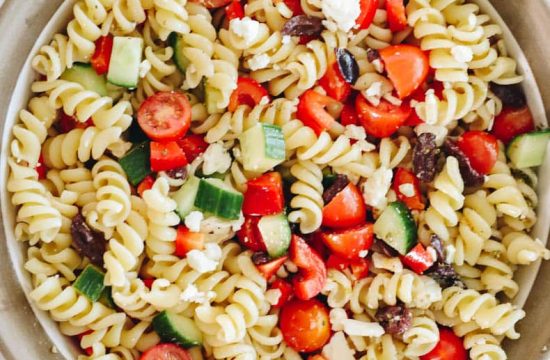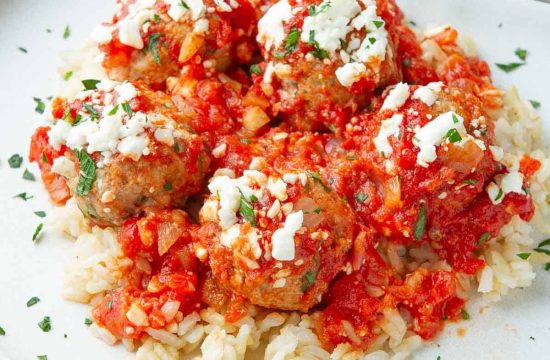Article by Dr Raghuram Y.S. MD (Ay) & Dr Manasa S, B.A.M.S
Achilles Tendinitis is a commonly encountered condition affecting the heel in clinical practice. In this condition people will have pain, swelling and limited movements at the back of your heel or around the heel bone. It worsens with activity and presents with severe pain after exercising. There might be thickening of the tendon with pain and stiffness along the tendon in the early hours of the morning. In some cases, there is formation of bony spurs over the tendon region. There also may be swelling and wearing shoes may be painful.
It is caused due to the inflammation and irritation of Achilles tendon, a structure which connects the calf muscles to the heel bone. This tendon is also responsible for the movements at the foot and ankle. It helps you in activities like walking, running, jumping and climbing stairs and also enables you to stand on the tiptoes. Named after the Greek God Achilles, it is the thickest and strongest tendon in the body which has the capacity to withstand bigger forces. Repetitive strain and injury to this tendon is the most common cause. Overuse of foot is yet another cause. It may follow inflammation, degeneration or tear or break in the tendon.
Ayurveda Understanding of Achilles Tendinitis
When we try to correlate Achilles Tendinitis with conditions mentioned in Ayurveda, we need to look at the common presentation of this condition and see where it fits into Ayurveda description.
The Dosha Relationship
In Achilles Tendinitis there is pain, swelling and limited movements around the pada i.e. foot. All these symptoms are definitely caused by aggravation of vata in the region of foot / feet.
Swelling may be caused due to vata or even kapha. If there is oedema around the afflicted foot, which has not been mentioned in modern medicine, kapha association shall be considered to be happening in the later course of the disease, else the swelling is due to vata itself.
Since this condition is associated with inflammation, pitta involvement is definitely there.
Injury and overuse of foot are the main causes of this condition, both of which aggravate vata. So, insult to vata is the firsthand event in pathogenesis. Later pitta would get involved.
So, we can conclude Achilles Tendinitis, on the basis of its presentation as a predominantly vata condition with pitta association or a ‘vata pitta’ condition to keep it short.
Most symptoms of Achilles tendinitis are those of aggravated vata and pitta. Anti vata and Anti pitta remedies, therapies, medicines and diet will help in relieving the symptoms of Achilles tendinitis.
The Dhatu Relationship
Rakta Dhatu – Basically, it is the tendon which is involved in the painful process in this disease. Tendons are compared to Kandaras explained in Ayurveda. Though we do not get a detailed explanation of Kandaras in Ayurveda treatises we get to learn that they are the upa-dhatus i.e. sub-tissues of Rakta Dhatu – blood tissue. So, kandaras are derived from the blood and so also the siras i.e. blood vessels, veins. So rakta dhatu might be considered as the main dhatu involved in the pathogenesis.
Explanation from modern anatomy of Achilles tendon tells that the tendon has its blood supplied from two main arteries, posterior tibial and peroneal arteries. Usually, this tendon has poor blood supply throughout its length. The injury takes place most often in the midsection of the tendon having less vasculature. Healing of tendon injury too is late owing to its hypo-vasculature. This shows that good and optimum vasculature of the Achilles tendon is the secret of its strength and integrity. This also substantiates kandara – Achilles tendon here, to be an upadhatu of Rakta dhatu.
Medo Dhatu – Snayu i.e. ligaments and nerves and Sandhis i.e. bony joints are the upadhatus of medo dhatu – the fat tissue. Though these structures may not be directly involved in the pathogenesis of Achillis tendinitis, they are present in and around the tendon. Here we need to consider the ligaments, nerves and joints, mainly the ankle joint present in the neighbourhood of the affected tendon.
The Indriya Relationship
Achilles Tendon is a structure related to the Pada – the foot. Foot – is a karma indriya according to Ayurveda i.e. a motor organ of locomotion which helps us to move around. In Achilles tendinitis, the indriya part of the food is also put into insult due to the damage of the tendon. We can see that this disease is associated with loss or disturbance of movements at the foot. The functions of indriyas are under the control of vata and so are our body movements. Here again we have the aggravated vata in the picture of our discussion.
The Marma Relationship
Achilles tendon is a part of Gulpha Marma i.e. the delicate or vital structures comprising the ankle joint. Gulpha Marma is a type of Sandhi Marma i.e. Marma predominates in the ‘joint’ – sandhi.
Marma is a point of amalgamation of different structures – mamsa – the muscle, sira – the blood vessels, snayu – the ligaments (snayu is inclusive of tendons also), asthi – the bone and sandhi – the joints. In sandhi marma, the joint is predominant in comparison to other structures. The other structures will be in lesser proportions.
In long standing and stubborn kinds of Achilles tendinitis not responding to conventional treatments or recurring very frequently or crippled the patient or is in need of surgery – the involvement of gulpha marma located in gulpha sandhi shall be considered. These cases are difficult to cure because of the damage of not just the structures but also the Prana energy in those sites.
It is also classified amongst Rujakara Marmas i.e. ‘marmas which predominantly cause pain when injured’. We can see that pain is the predominant symptom of Achilles tendinitis.
Signs of injury to gulpha marma include Ruja – pain in the ankle region, including the region of tendon, Stabdha Padata – stiffness, catch or rigidity in the joint (tendon here) and Khanjata – functional deformity of foot or lower limb and restriction of movements.
Indrabasti Marma located in the calf muscles may also be involved.
Diseases mentioned in Ayurveda which can be considered in closer correlation with Achilles Tendinitis
Vata Vyadhi – In general terms Achillis tendinitis is a Vata Vyadhi – a special and specific condition / ailment caused by aggravation of only vata.
Vata Nanatmaja Vyadhi – There are some conditions mentioned amongst the eighty Vata Nanatmaja Vyadhis i.e. unique vataja disorders which can be brought under the umbrella of Achilles Tendinitis in terms of comparative study. They are –
– Pada Shula – pain in the foot
– Pada Bhramsha – instability of the foot
– Pada Shunyata – numbness of the foot
– Gulpha Graham – catching pain or rigidity / restriction of movements in the ankle joints
– Pindikodweshtana – cramps in calf muscles
The Nidana angle
Below mentioned are the main causes of Achillis tendinitis according to modern medicine and understanding of dosha vitiation due to the same.
| Sl No | Causes of Achilles Tendinitis | Doshas affected |
| 1 | Repetitive strain / usage and overload leading to injury / direct trauma | Vata |
| 2 | Over exercise and exercising without proper warmup sessions | Vata |
| 3 | Inflammation of the tendon | Pitta, Vata |
| 4 | Degeneration of unresolved condition | Vata |
| 5 | Tear or break in the tendon | Vata |
| 6 | Running excessively – as in runners, running too far, too intensely or uphill often | Vata |
| 7 | Calf muscle tightness | Vata |
| 8 | Muscle weakness | Vata |
| 9 | Torsion of the tendon | Vata |
| 10 | Lateral instability of ankle joint | Vata |
| 11 | Constant effort and mechanical overload | Vata |
| 12 | Training on uneven and hard surfaces | Vata |
| 13 | Excessive indulgence in sports like tennis requiring sudden stop and changes in direction | Vata |
| 14 | Not taking rest after exercise | Vata |
| 15 | Overweight, obesity | Kapha, Vata |
The Rupa angle
| Sl No | Symptoms of Achilles Tendinitis | Doshas affected |
| 1 | Pain along the course of the tendon | Vata |
| 2 | Pain worsens with activities | Vata |
| 3 | Pain increases after overnight rest, early morning pain | Vata, Kapha |
| 4 | Stiffness | Vata |
| 5 | Severe pain after exercising | Vata |
| 6 | Thickening of tendon | Vata, Kapha |
| 7 | Calf muscle tightness | Vata |
| 8 | Spur formation | Vata |
| 9 | Swelling worsening after activity | Vata, Pitta |
| 10 | Rupture of tendon / tear and restricted movements (complication) | Vata |
Ayurveda treatment principles for Achilles Tendinitis
Nidana Parivarjana
Avoidance of the causative factors, as for any other disease, is the best strategy to prevent this condition. We cannot imagine our day-to-day life going smoothly without moving around easily. This is possible only if our healthy feet carry our body on it. Achillis tendinitis is one of many disorders which pose an obstacle in our locomotion apart from being a painful and bothersome condition if not addressed at proper time. One should keep a check on the physical and sporting activities he or she is involved in, running, surfaces on which one walks or runs, any activity which would strain and injure the tendon and also on the body weight.
Bahya Chikitsa – External therapies
Abhyanga – Massage with herbal vata mitigating oils will ease the pain, stiffness and enable smooth movements.
Padabhyanga – Though foot massage is a part and parcel of massage therapy, it has been praised for its immense benefits it bestows. Customized foot massage with herbal oils might be a game changer in those who are physically active, involved in sports and vigorous training involving feet and who are prone to wear and tear in the lower limbs. This is also a preventive medicine. It lubricates the joints, tendons and soft tissues around the foot and provides a protective shield against wear and tear. But Nidana Parivarjana needs to be included for these therapies to work and yield results to their fullest.
For Abhyanga and Padabhyanga – Ksheerabala Taila, Mahamasha Taila, Mahanarayana Taila, Sahacharadi Taila, Lakshadi Taila, Balashwagandha Lakshadi Taila and Murivenna may be used among the lot.
Swedana – Sudation in combination with a good massage relaxes the ankle joint and the Achilles tendon to a great extent. Nadi Sweda – tubular steaming or Avagaha Sweda – immersion steaming is helpful.
Avagaha – Dipping or immersing the foot in decoction prepared with Dashamula, Laksha and Milk is beneficial for giving foot immersion. Immersion can also be done in lukewarm oils mentioned above followed by immersion in Dashamula Ksheera of tolerable temperature.
Lepa and Upanaha – Application of pastes and poultices prepared with vata mitigating herbs should be done on the affected tendon.
Abhyantara Chikitsa – Internal therapies including Panchakarma therapies
Vasti – Medicated enemas should be administered in stubborn and chronic cases of Achilles tendinitis. Guggulutiktaka Ghrta Anuvasana or Matra Vasti and Dashamula Ksheera Basti are effective in this condition.
Virechana should be considered in long standing inflammation associated with Achilles tendinitis and also in presence of pitta predominant symptoms.
Rakta Prasadana – Medicines useful for promoting ‘blood health’ and to balance the blood supply to the ankle joint, foot and Achilles tendon shall be considered.
Pathya Apathya – dietetic considerations
Foods and drinks which are vata and pitta balancing shall be used in the active phase of the disease.
Important Formulations
– Sahacharadi Kashayam
– Maharasnadi Kashayam
– Kaishora Guggulu
– Yogaraja Guggulu
– Rasna Guggulu
– Guggulutiktakam Ghrtam
– Nimbamritadi Eranda Tailam
Useful Yoga postures
– Vyaghrasana – Tiger Pose
– Adhomukha Shvanasana – Downward Facing Dog Pose
– Veerabhadrasana – Warrior Pose
– Malasana – Garland Pose
– Bhujangasana – Cobra Pose
– Garudasana – Eagle Pose
– Eka Pada Rajakapotasana – Pigeon Pose
– Anjaneyasana – Low Lunge Pose















